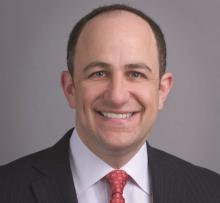ORLANDO – Regardless of what you think about using biosimilars, chances are you won’t be able to avoid using them if you already use biologics.
That’s according to Dr. David T. Rubin, codirector of the Digestive Diseases Center at the University of Chicago. “They’re coming and they will influence our practice, ” he told a clinical track audience at a conference on inflammatory bowel disease.
Before exploring how these medications may change how you treat patients, here’s a look at what they are and how they’re brought to market.
First, a little basic science review of small-molecule medications vs. biologic ones. Small-molecule agents are simple structures, which are stable enough to be replicated, do not tend to cause immunogenicity, and require very little in the way of testing for quality assurance.
By contrast, biologic medicines, including monoclonal antibodies, are complex structures – in some cases, highly complex – that are replicable, but often with a high degree of difficulty. Unlike small-molecule medicines, biologic drugs cannot be mass produced and require almost 250 sophisticated tests to ensure quality. They are less stable and can trigger an immunogenic response. The manufacturing process for biologics is so precise that the slightest disturbance in development can affect whether the medication is functional.
As a result, the typical development timeline for these medications is between 7 and 8 years, with costs running as high as $250 million each. Currently, there are more than 650 recombinant therapeutics in development worldwide, more than half of which are in the preclinical stage. The top original products being copied are adalimumab at 13, and infliximab with 9. Meanwhile, at least five as-of-yet unpublished studies are looking at how these potential adalimumab and infliximab biosimilars perform in inflammatory bowel disease (IBD), Dr. Rubin said. Biosimilars are used worldwide, primarily in Europe and Asia.
But when these biosimilars reach our shores, don’t call them generics. “I encourage you to not use that term, even when discussing them with patients,” Dr. Rubin said. Still, because the Food and Drug Administration says that a biosimilar should have no greater risk for adverse events or diminished efficacy compared with the original biologic just as with generics, pharmacists are within their rights to substitute biosimilars for original biologics without prescriber intervention.
That’s why, “There must be pharmacovigilance with biosimilars, just like with generics, after the drug is brought to market,” Dr. Rubin said.
Biosimilars are also not “biobetters,” medications that have modifications added to the original biologic product in order to improve their clinical performance. While biobetters can be patented, they do not have legal or regulatory status, however, because they are considered new drugs.
The FDA defines biosimilars as a biological product that is highly similar to the reference product, with no clinically meaningful safety, purity, or potency differences from the reference product.
Early in 2015, the biosimilar filgrastim-sndz (Zarxio TM, Sandoz-Novartis), which has been available in Europe since 2009, entered the U.S. market. With its biosimilarity to Filgrastim (Sandoz-Novartis), the medication’s primary indications are for various cancers and chronic neutropenia.
To help expedite bringing the medications to market, FDA guidance data requirements for biosimilars is abbreviated when compared with that for biologics. Rather than ask developers to conduct clinical trials, developers must provide at least one comparative study between the biosimilar and its original, according to the original drug’s indication. There also is what Dr. Rubin called a “weighted reliance” on analytical similarity to the original. In addition, no phase II dose-ranging studies are required. Indication extrapolation is also possible, meaning that safety and efficacy data leading to a biosimilar being approved for say, rheumatoid arthritis, could also be applied to Crohn’s disease.
So, what does all this mean for your patients? It depends upon in which state you practice: Even when a recombinant product meets the FDA criteria, whether or not a patient can be placed on a biosimilar comes down to state regulation. At present, 19 states have passed laws as to how and when biosimilars can be swapped out, most of them stipulating that a patient be notified when it occurs. Physicians maintain their rights to ask pharmacists to “dispense as written,” but since biosimilars are cheaper than their originals, you won’t necessarily get around mounting pressure from third-party payers to contain costs.
Dr. Rubin said this potential friction between insurers and physicians could result in delays with adverse effect on the patient. “If the insurance company says they prefer another agent over the one a patient is receiving, we all know about the unexpected delays that can occur when switching.”


